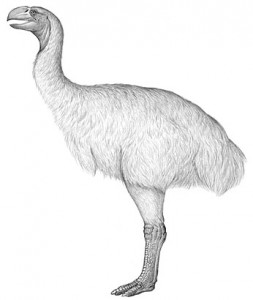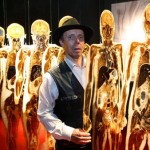“The Victorian Supreme Court has ordered the destruction of three works attributed to prominent Australian artists Charles Blackman and Robert Dickerson after finding that they are fake. Justice Peter Vickery yesterday handed down his findings in the long-running case of Blackman and Dickerson against Carlton gallery owner Peter Gant, who was the source and valuer of the three works.
”I am left in no doubt that the two works claimed to be by Charles Blackman, Street Scene with Schoolgirl and Three Schoolgirls, and the one work claimed to be by Robert Dickerson, Pensive Woman, were not by the hands of those artists,” Justice Vickery told the court. “They were fakes masquerading as the genuine article…”
Read More: Judge orders destruction of fake art
“Everyone at MoMA and their social media mavens need to be given a raise. I don’t know of any show that has ever ended with such a big and dramatic IRL & online frenzy like the Marina Abramovic’s three-ring circus (I know, I know, there was only one ring). The crew at MoMA has this social media thing totally under control and I suspect everyone will look to them from now on to set the pace. I didn’t plan to watch the last day online — I had a whole list of other things to do — but alas I was sucked in. The Internet has a way of doing that.
“There was so much action it was dizzying. If it wasn’t the tweets about the scene, photos of the crowd, tumblogs comparing Abramovi? to “Whistler’s Mother,’ then it was artist Jason Polan’s drawing of the MoMA line from the night before, or artist Nina Meledandri, who has been documenting the whole experience as a potential participant (she visited the museum over 36 times during the show) on a tumblog and she was even tweeting about her final sitting with Abramovic on the last day…”
Read More: MoMA’s Abramovic Ends With a Bang
“Rock art found in central Arnhem Land could be among the oldest examples of rock painting in the world – if the birds depicted prove to be what scientists think they are. A rock art specialist, Robert Gunn, said he suspected the paintings depicted the long-extinct genyornis. Verification of the age of the paintings would more than double the potential age of painted rock art in Australia, he said.
“The genyornis, a flightless bird which stood three times the height of an emu, was one of many megafauna to became extinct when humans began burning the continent for hunting and land-clearing 40,000 years ago.
Mr Gunn, a Victorian private consultant employed by an Aboriginal group, the Jawoyn Association, to assess the rock art, said rock once attached to the site of the paintings was yet to be dated. But he said key to dating the work would be confirming the species depicted. He said the thick, rounded beak of the painted birds was a characteristic of the genyornis…”
Read More: Arnhem Land art could be world’s oldest
“Louise Bourgeois, the French-born American artist who gained fame only late in a long career, when her psychologically charged abstract sculptures, drawings, and prints had a galvanizing effect on younger artists––particularly women––has died at the Beth Israel Medical Center in Manhattan, reports Holland Cotter for the New York Times. She was 98. Wendy Williams, the managing director of Bourgeois’s studio, confirmed her death.
“Bourgeois’s sculptures in wood, steel, stone, and cast rubber, often organic in form and sexually explicit, emotionally aggressive yet witty, covered many stylistic bases. But from first to last they shared a set of repeated themes, centered on the human body and its need for nurture and protection in a frightening world, notes Cotter.
“Among her most familiar sculptures, Nature Study, 1984, depicts a headless sphinx with powerful claws and multiple breasts. Of her most provocative is Fillette, 1968, a large, detached latex phallus. Bourgeois can be seen carrying this object, nonchalantly tucked under one arm, in a portrait by Robert Mapplethorpe, which was taken for the catalogue of her 1982 retrospective at the Museum of Modern Art…”
Read More: Louise Bourgeois (1911–2010), ArtForum
“Photographs, being infinitely reproducible, shouldn’t have an intrinsic commercial value. But the art market over the past few decades has done a fine job of leveraging images and systematically inflating their prices, and the prints on office walls now qualify as a corporate asset. When companies fail, art is among the spoils that the creditors squabble over. The Polaroid Corporation collapsed in 2008. Its share of the photographic market had been eroded by a newer digital technology, but what brought it down was the exposure of a Ponzi scheme – an investment fraud like the one the notorious trickster Bernard Madoff operated – at its parent company. A judge appointed to settle Polaroid’s debts decreed that its photographic archive, secreted in what the conservation departments of museums call “deep storage” in a warehouse in Massachusetts, should be handed over to the liquidators. More than 1,200 of the choicest specimens will be placed on show at Sotheby’s in New York early next month, then auctioned off in a sale on 20 and 21 June. The yield is expected to be between $8m and $12m, although the competitive hysteria that such occasions excite will probably edge that upwards…”
Read More: Elegy for the Polaroid
“How do you design a museum to house the art of a century that has yet to begin? That was the challenge faced by a group of architects who, in 1999, were invited to submit proposals for a museum of 21st-century art to be built in Rome. Altogether the least experienced of the competitors was the London-based Zaha Hadid, an architect whose designs had earned her an unrivalled reputation for spatial experimentation but who, after 20 years of practice, had only a couple of modest completed buildings to her name.
“Her Rome proposal gave plenty of indication as to why that might be: a frenzied intermeshing of gargantuan concrete forms, it would clearly be fantastically difficult to build, eye-wateringly expensive and impose some of the most demanding curatorial constraints of any gallery in the world. The jury was widely expected to admire it for the sculptural tour de force that it clearly was – and hastily transfer it to the reject pile.
“And yet, in a decision that was surely motivated less by the aim of building the best art gallery than by that of rejuvenating this most ancient of cities’ public image, they gave Hadid the job. Ultimately, the Italian authorities decided to build only the largest of the five interlinked buildings that she proposed, but it alone has taken a decade to build and cost a cool 150 million euros. This week , under the voguish moniker Maxxi, it finally opens its doors to the public…”
Read More: Zaha Hadid’s Maxxi art gallery in Rome: stunning building, terrible gallery
“Media culture is so rapid and so recent that the lives of many people still around today encapsulate the entire history of sound film, rock and roll and, for most, the digital age. But what if one person’s life were to contain just about every pop phenomenon beloved by the postmodern mind? That person was Dennis Hopper. He starred in two of James Dean’s films and was crushed by the young actor’s death. He roomed with Elvis Presley and the actor Nick Adams, as the King’s film career began. Hopper married Hollywood royalty, the actress Brooke Hayward, daughter of famed producer Leland Hayward and the doomed beauty, actress Margaret Sullavan. Brooke chronicled Hopper’s descent into drugs and depression in the bestselling memoir Haywire.
“Hopper, as was demonstrated in his spectacular recent show at Shafrazi Gallery, knew every significant pop artist and curator (Irving Blum, Andy Warhol, Walter Hopps, Ed Ruscha and onwards) before anyone else, collected them first and photographed them for all time. He made the film, Easy Rider, which turned Jack Nicholson into a star and, more dubiously, glorified a thousand, thousand overdoses and jail sentences for drugs. Hopper’s performance in Apocalypse Now gave the finger to John Wayne and created a more circumspect real-life model for military leadership for Colin Powell and his imitators (don’t think that they didn’t teach this film at the Army War College)…”
“The world’s most anonymous public figure has famously remained silent but for the statements he makes with his art. Until now. The world’s most famous street artist has made his directorial debut, and has emerged – sort of – to promote his film. In his only Australian interview, conducted, after much rigmarole, by email, the elusive artist talks about his much-discussed film, his anonymity and his Melbourne stencils.
“His film, Exit Through the Gift Shop, in which he “stars”, appearing in shadow and speaking through a voice distorter, purportedly began as someone else’s film – that of the seemingly crazy Frenchman Thierry Guetta, an amateur filmmaker living in Los Angeles. Guetta spent years obsessively filming street artists at work , starting with his cousin, the celebrated Space Invader, and LA’s Shepard Fairey, best known for his iconic Barack Obama poster. Through Fairey, Guetta meets Banksy and the pair strike up an odd friendship; Banksy allowing Guetta to film him in exchange for Guetta helping him find street canvases in LA.
Without giving too much away, Banksy realises Guetta is no filmmaker at all, and the two swap roles – Banksy takes over the production and Guetta cynically transforms himself, almost overnight, into an artist – with astonishing results. Like many Banksy creations, the film works on a comedic level and as a statement about fame and the commodification of art.Since its premiere at the Sundance Film Festival in January, speculation has been rife that Exit Through the Gift Shop is a “mockumentary”, a brilliantly executed prank.
Banksy insists it’s not…”
Read More: Drawn from the shadows, wanted man comes out to play
“Shock doc Gunther von Hagens, of the infamous Bodyworlds exhibition which features preserved and flayed human cadavers, is taking the museum gift shop to a whole new—and extremely creepy—level. Opening today in the town of Guben in Brandenburg, Von Hagen’s “Plastinat Shop” is selling human and animal body parts and is being called the “Supermarket of Death” by the German media. So how much will a piece of this macabre memorabilia cost you?”










Pingback: Tweets that mention This just in – June 3, 2010 | -- Topsy.com